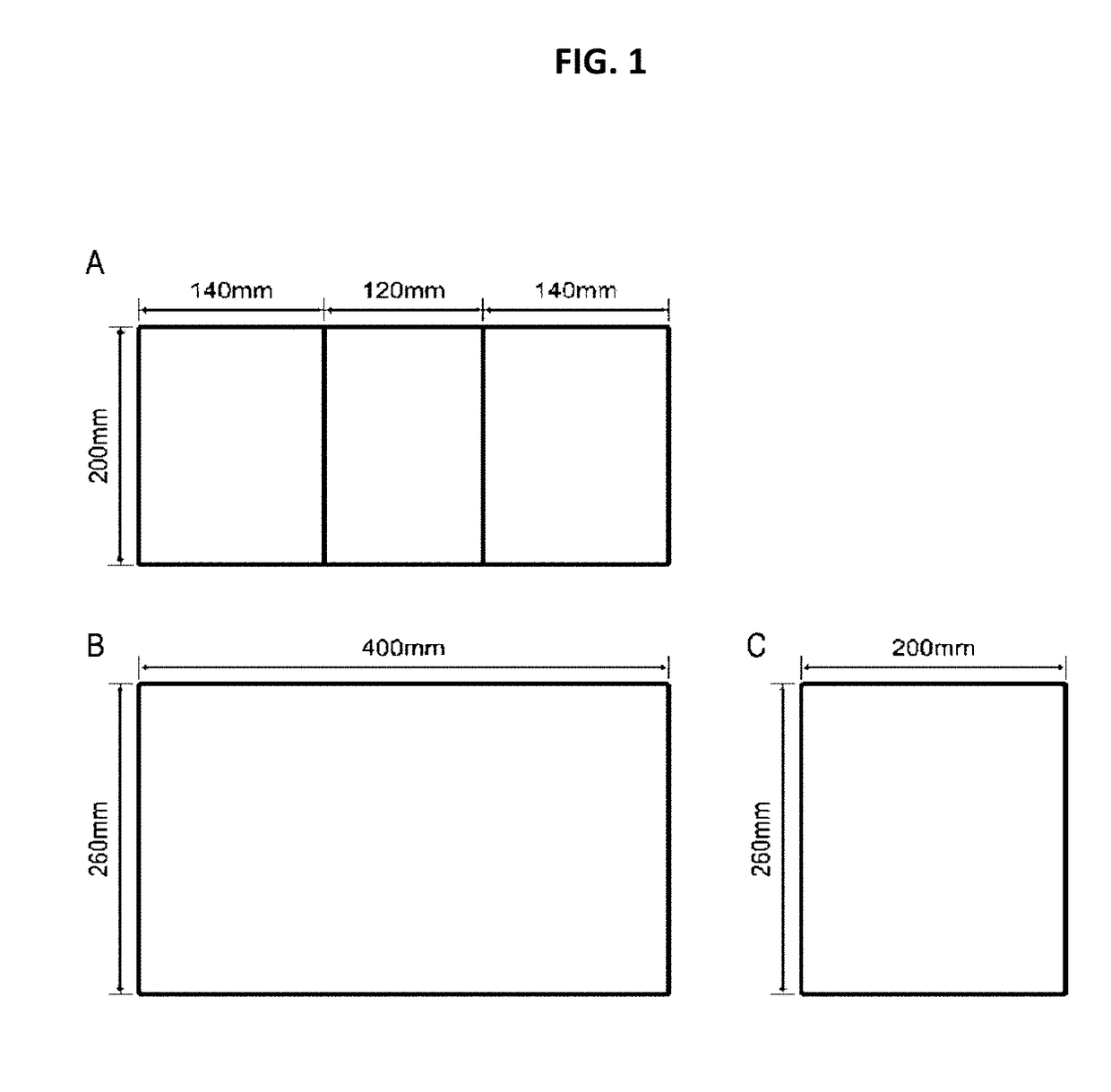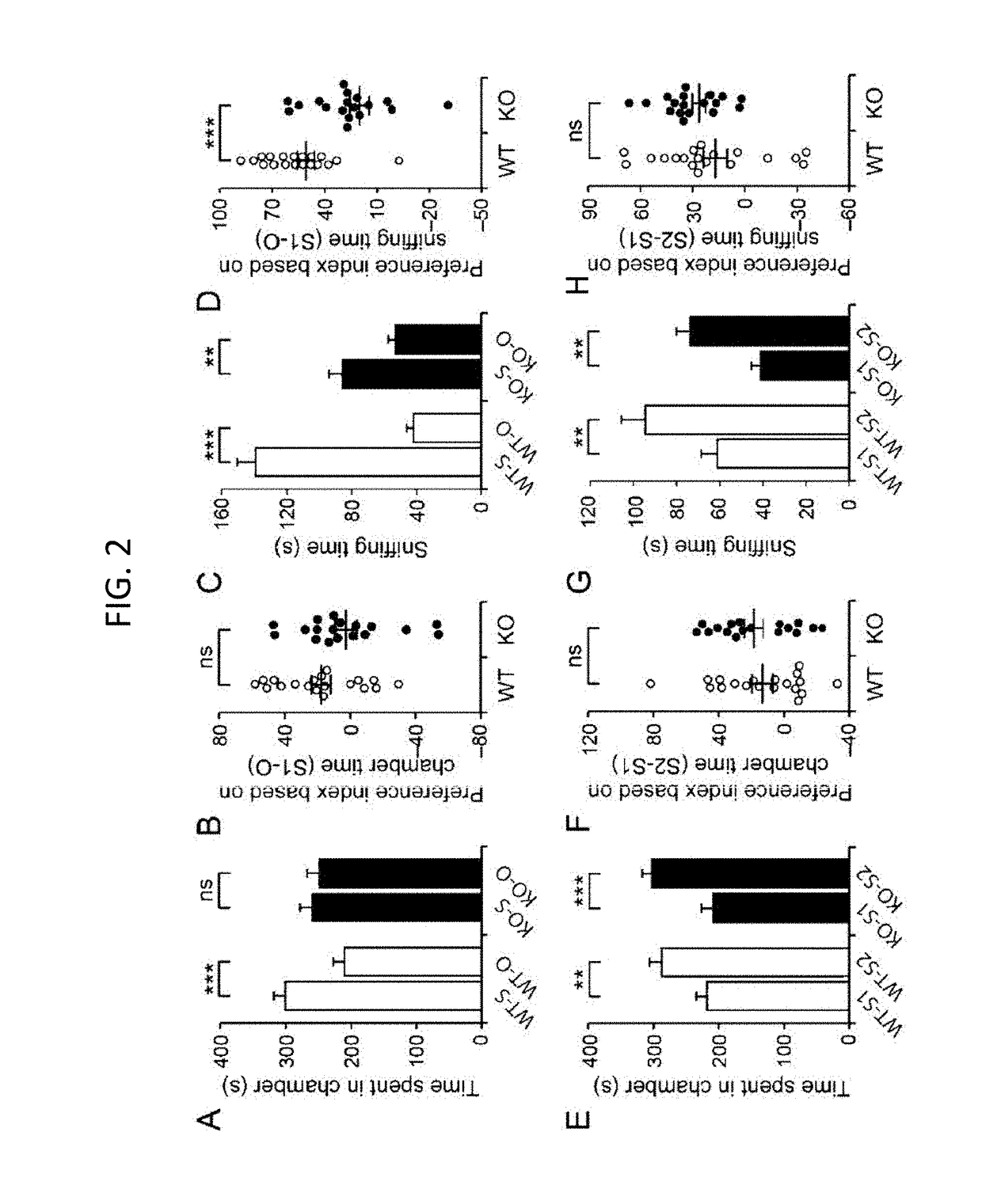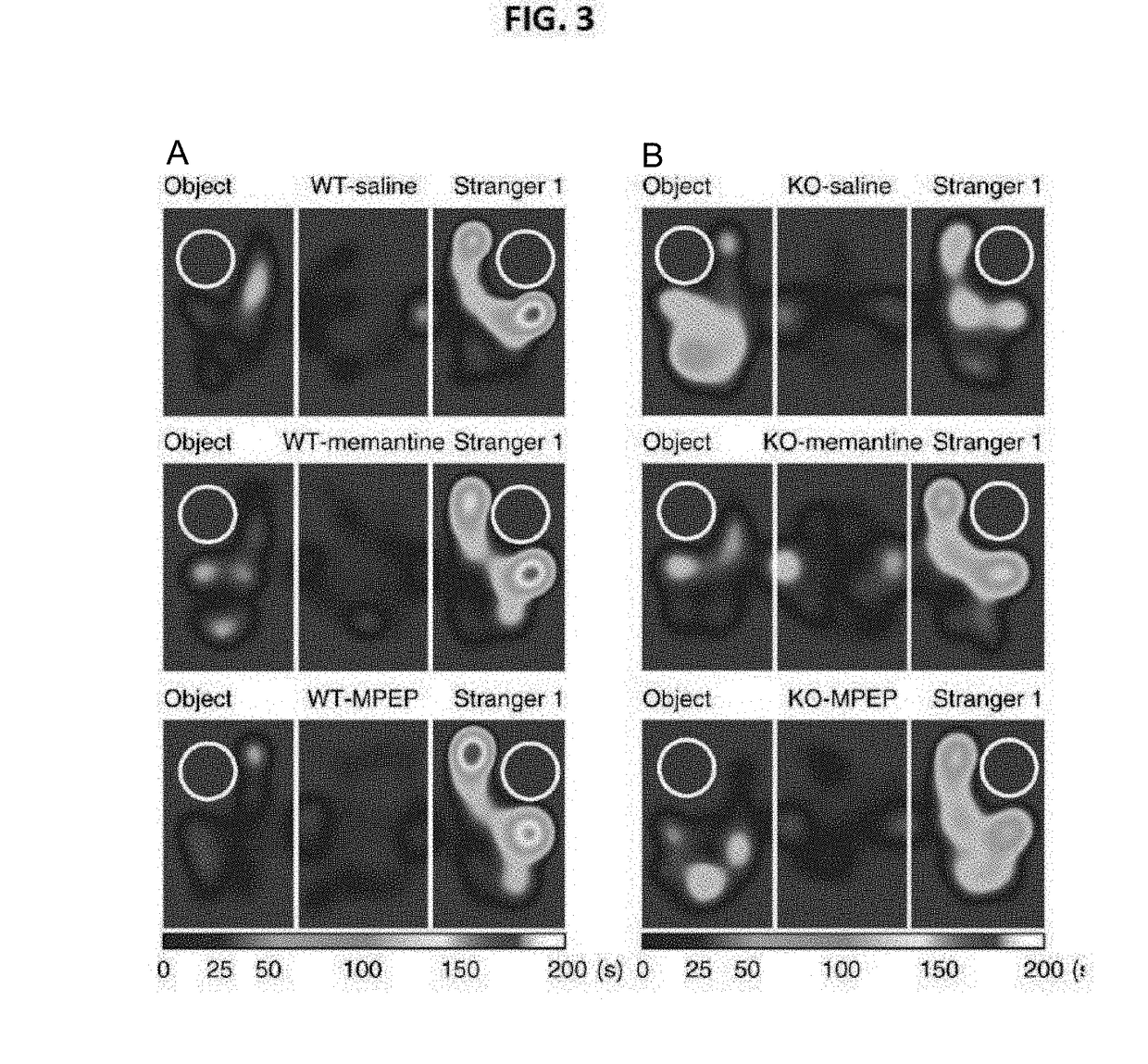Pharmaceutical composition for prevention and treatment of mental disease with enhanced nmdar function
a technology of nmda and composition, applied in the direction of amine active ingredients, organic active ingredients, heterocyclic compound active ingredients, etc., to achieve the effect of enhancing nmdar function and improving patient sociability behavior
- Summary
- Abstract
- Description
- Claims
- Application Information
AI Technical Summary
Benefits of technology
Problems solved by technology
Method used
Image
Examples
experimental example 1
[0038]NMDAR was tested with respect to the sociability behavior of hyperactivated mice. The 3-chamber sociability test and the direct interaction test, which are the most widely used among the behavioral experiments for identifying sociability behavior of mice. The 3-chamber sociability test was conducted by using a behavior experiment box separated into 3 sections. FIG. 1 shows a drawing of an experiment box used for the 3-chamber sociability test. A, B, and C of FIG. 1 show the measurement based on the box bottom, the horizontal side surface and the vertical side surface, respectively, and the experiment box was manufactured exposing that the top so the experiment may be photographed by a camera (FIG. 1). In the basic 3-chamber sociability test, a mouse (stranger) was placed in one side and an object (small toy block) without scent was placed in the other side, and the normal mouse (WT) and the deficient mouse were placed in the middle chamber to observe how much attention was giv...
experimental example 2
[0047]From the result of the 3-chamber sociability test of Experimental example 1, the IRSp53 deficient mouse was identified as having sociability behavior problems. Therefore, in the present Experimental example 2, whether the sociability behavior deficiency is restored when the NMDAR function in the IRSp53 deficient mice is suppressed was evaluated. The sociability behavior restoring experiment was conducted as described below.
[0048]30 minutes before the 3-chamber sociability test, the memantine and the MPEP were intraperitoneally injected to identify the sociability behavior. For reference, the memantine is the direct inhibitor of the NMDAR. In addition, the MPEP is an MGluR inhibitor and indirectly controls the NMDAR through the MGluR which is a glutamate receptor. In the present experiment, the memantine having a concentration of 10 mg / kg was used and the MPEP having a concentration of 30 mg / kg was used. In addition, to eliminate the influence due to the intraperitoneal injecti...
experimental example 4
[0059]The IRSp53 is the fifth most protein existing in the excitatory postsynapse, and is a scaffolding protein directly and indirectly interacting with the neurotransmitter receptor and the signaling protein. The IRSp53 is also known as BAIAP2. The IRSp53 is directly connected to many protein forming actin cytoskeletal, large amount of which exist in the excitatory synapse and is required for specifically maintaining the synaptic structure.
[0060]The brain slices including the hippocampus from each of the wild-type mouse and the IRSp53 deficient mouse were prepared, and the electrophysiological equipment was used to induce a reaction stimulating specifically the NMDAR directly on each never cell.
[0061]As a result, in the wild-type mouse, the NMDAR function was activated normally, thus the reaction was observed, whereas, in the IRSp53 deficient mouse, about a 20% increased reaction compared to the wild-type mouse was observed (E of FIG. 5, comparison of WT-Saline / KO-Saline NMDA / AMPA ...
PUM
| Property | Measurement | Unit |
|---|---|---|
| humidity | aaaaa | aaaaa |
| temperature | aaaaa | aaaaa |
| attention deficit/hyperactivity disorder | aaaaa | aaaaa |
Abstract
Description
Claims
Application Information
 Login to View More
Login to View More - R&D
- Intellectual Property
- Life Sciences
- Materials
- Tech Scout
- Unparalleled Data Quality
- Higher Quality Content
- 60% Fewer Hallucinations
Browse by: Latest US Patents, China's latest patents, Technical Efficacy Thesaurus, Application Domain, Technology Topic, Popular Technical Reports.
© 2025 PatSnap. All rights reserved.Legal|Privacy policy|Modern Slavery Act Transparency Statement|Sitemap|About US| Contact US: help@patsnap.com



